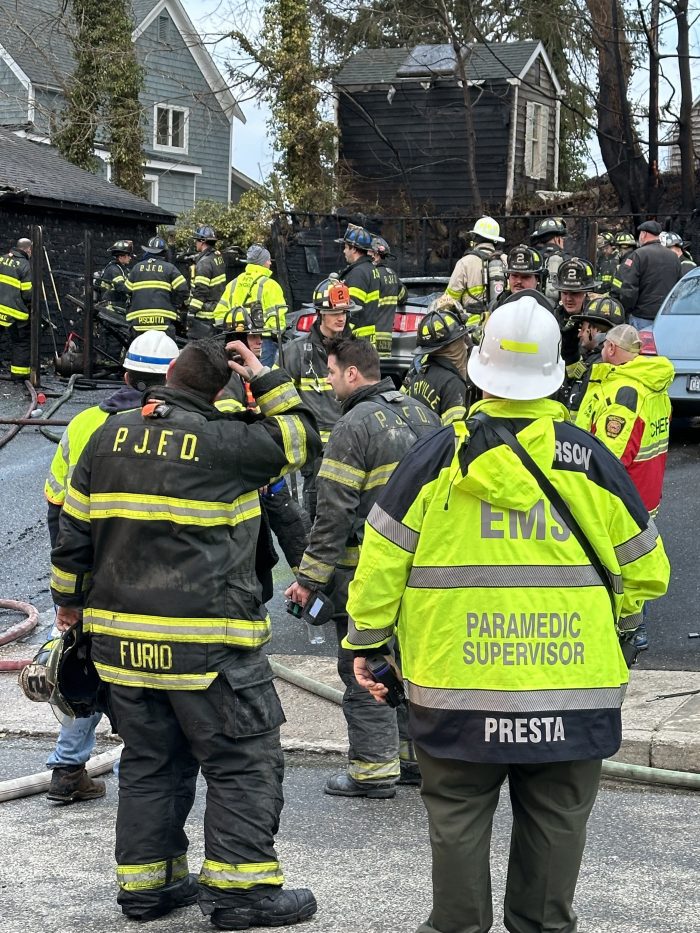The majority wins in a democracy
We are about to vote to confirm or change the people who comprise the majority of state and federal elected officials. Unfortunately, most of our information about the people who are running for office we get from the television news media, which is motivated by building an audience that they can sell to advertisers. This is true for virtually all news media outlets.
he owners and senior management of the news media know that “hate and discontent” builds the largest audience so they emphasize “hate and discontent” in their reporting. These people don’t want their audience to be reasonable and rational — they want you to be angry. They want you to march on the Capitol when the vote doesn’t come out your way. Don’t give them what they want.
We live in a democracy so, right or wrong, the majority wins. If you don’t like the rules, get off your butt and engage in the hard work that it takes to change them. That requires ignoring the media and learning how to change the state and federal rules. The most important of these rules are called the constitutions. It requires getting involved, at the grassroots level, in picking who will ultimately run for office. Accept that in this endeavor, as I said before, in a democracy, the majority wins.
Francis G. Gibbons Sr.
Terryville
Quality education is the answer, not grade reorganization
Anthony Dattero in his Opinion piece entitled ”Preserving what works in 3V school district” [The Village Times Herald, March 14] finds that “the notion of transitioning to a common middle school model is, frankly, mind-boggling and irresponsible.” I do not.
Preserving what works in the Three Village school district is no different from what works in any school district and has no relation to grade organization. What works well begins with a capable teacher with every student. Add capable support staff, effective administrators, budget support and an engaged community providing safe learning places — they make quality education possible.
I was with Commack school district from 1973-88 during which time the pupil enrollment fell from 15,000 students to 6,000. Thirteen of 21 schools were closed and the grade organization changed from K-6, 7-9, 10-12 to its current K-2, 3-5, 6-8, 9-12 organization. There were hostile public meetings, threatened lawsuits and negative press. There also was a resolute board of education that made wise decisions about present and future space needs.
The change in grade organization did not change the quality of education in Commack. It would not do so in Three Village either.
Forrest McMullen
South Setauket
Supporting local journalism
The New York Local Journalism Sustainability Act would provide tax credits to local community based newspapers for hiring local news reporters. It is important to lobby Gov. Kathy Hochul [D], state Senate Majority Leader Andrea Stewart-Cousins [D], Assembly Speaker Carl Heastie [D], along with your local state senator and assemblymember to support this critical legislation. Most communities are down to one local daily or weekly newspaper. Newspapers have to deal with increasing costs for newsprint, delivery and distribution as well as reduced advertising revenues and competition from the internet and other news information sources.
Daily newspapers concentrate on international, Washington, Albany, business and sports stories. They have few reporters covering local neighborhood news. Weekly newspapers fill the void for coverage of local community news.
I’m grateful that you have afforded me the opportunity to express my views via Letters to the Editor, along with others who may have different opinions on the issues of the day.
Albany needs to join us in supporting weekly community newspapers. Readers patronize advertisers, who provide the revenues to help keep the papers in business. Let us hope there continues to be room for everyone, including the Times of Huntington-Northport, Times of Smithtown, Times of Middle Country, Port Times Record, Village Times Herald and Village Beacon Record.
Larry Penner
Great Neck
Try to be more responsible
In regard to the letter, “Women are not cattle,” published on March 14. Being a woman, I wholeheartedly agree with this. Yet, regardless where anyone stands on abortion, the last sentence totally lost me by quoting lesson No. 1: “Try not to be born with a uterus.” Heavy subjects regarding pro-life, anti-choice, etc., should not be taken in jest. Due diligence should have been taken into consideration before blatant sarcasm was quoted with lesson No. 1.
It would have been more admirable and respectful to have simply stated, “Try to be more responsible” — and not get into the program “Financial Literacy for Women” sponsored by Assemblyman Ed Flood [R-Port Jefferson] at the Comsewogue Library by using the venue as a prop or to get an agenda and/or point of view across.
Rhoda Angelier
Coram
Potential impact of school enrollment decline
The article, “Residents debate future of Port Jefferson School District at civic meeting,” in Port Times Record March 14 gives the incorrect impression that resident Gail Sternberg delivered a presentation at a Port Jefferson Civic Association meeting “advocating drastic measures such as closing the school district.”
We attended that meeting and Ms. Sternberg never advocated closing or defunding the school district. Nor did anyone else present. There is an audio recording of the entire meeting that confirms this.
In discussing ways to address declining district enrollment, Ms. Sternberg suggested retaining the elementary school and hopefully the middle school, while exploring sending the high school students to a neighboring district on a tuition basis should enrollment fall to such a low level that the high school would be unable to offer a viable academic, athletic and social experience. The current district enrollment in the Port Jefferson elementary grades suggests the real possibility of this, with eventual high school graduating classes of less than 50 students.
It is important that all Port Jefferson School District residents be aware of the potential impact of the enrollment decline in this district as it is also adversely affecting most of Suffolk County school districts — including all of our neighboring ones — as Newsday recently reported and updated Feb. 12. The Board of Education should be proactive in examining ways to address this. Hopefully, this meeting will motivate the school board to begin this necessary dialogue with everyone in the community. be.
Robert Nicols, Darcel Weldon, Holly W. Fils-Aime, Molly Mason, April Quiggle
(all Port Jefferson)
A correction — and the challenges faced by Port Jeff school district
I am writing to correct the record, as an article in this paper misrepresented a report I gave at a recent Port Jefferson Civic Association meeting [“Residents debate future of Port Jefferson School District at civic meeting,” Port Times Record, March 14]. The article claimed I was “advocating for drastic measures such as closing the school district.” That is patently false. I never said a word about closing the district, nor did anyone else at that meeting.
My presentation was primarily focused on the alarmingly low student enrollment projected for the high school in coming years, and the fact that the district has yet to address this with residents — despite repeated calls to do so. I also suggested that while we should keep both the elementary and middle schools here, we might explore the possibility of tuitioning out only our high school students to a neighboring district, in the event that these enrollment projections prove true. I did not advocate for a merger, which could be more costly and complicated.
The reporter asserted that the information I cited was from documents I “allegedly” received from the Freedom of Information Act. I actually had those documents with me but she didn’t request to view them before reporting this story.
From the FOIA data, as of October 2023, present class sizes from pre-K to fourth grade reveal the projected size of each future graduating class: pre-K: 35 students; kindergarten: 49; first grade: 39; second grade: 49; third grade: 50; fourth grade: 55.
Based on these figures, projected total high school enrollment is also concerning: fall 2031: 193 students; fall 2032: 187; fall 2033: 172.
I understand there is a great sentimentality for the high school. However, many alumni that speak so fondly of their experience attended when there were 250 or more students in their graduating class. We are now facing a situation where there likely won’t be that number in the entire school. The vitality of the school will not be the same — and neither will the number of academic, club and athletic offerings. I believe most Port Jefferson teenagers are ready by high school to attend a larger academic environment, especially one close to home and with their Port Jefferson pals coming with them.
Our school district faces many unprecedented challenges and only by the school board and community working together cooperatively will we find solutions that best serve our students and residents.
Gail Sternberg
Port Jefferson
Editor’s note:
We have now seen the FOIA data and can remove the word alleged with relation to Gail Sternberg. The recording of the meeting indicates remarks to another attendee suggesting some aspects of the district can be mitigated without advocating such. We express our apologies for any misunderstanding or discomfort our words may have caused.
School district should be more forthcoming
We were pleasantly surprised to see so many fellow residents with diverse viewpoints at the Port Jeff Civic Association’s March 11 meeting about the school district. Did the conversation get heated at times? Yes. But while there was passionate disagreement on how to achieve what’s best for our students, there was no conflict about the vital importance of the goal itself.
That said, we were disappointed by the paper’s coverage of the event. The article wrongly claimed that Gail Sternberg was advocating for “drastic measures” like closing the school district. Neither Sternberg nor anyone else at the meeting ever said that. It also cast doubt on the validity of the declining student enrollment numbers Sternberg presented. A follow-up call from the reporter could have verified the numbers.
The article omitted to mention Bob Nicols’ presentation regarding the potential impact of declining revenue from LIPA on our school taxes. His research indicates that every $100 paid in school taxes this year could escalate to $126 by the end of the glide path in 2027-28, with a worst-case scenario reaching $195 if LIPA successfully grieves its taxes. Nicols based his numbers on data sourced from four documents, including the glide path agreement and three reports by LIPA. He also prefaced his work with the urgent call for further research from the school board to prepare for various scenarios. Despite this, his numbers were dismissed as “scaremongering” during a school board meeting.
While our role as a civic association is to provide a forum to discuss issues of importance to the community, as a volunteer board we need our members to bring their research, viewpoints and vision to the discussion, as Sternberg and Nicols did.
To address school district challenges effectively, we need accurate, accessible data. Yet, obtaining essential documents like expenditure reports and enrollment figures often require FOIA requests and waiting, thereby hindering public debate.
Therefore, we urge the school district to be more forthcoming with the entire community, not just those with children in the district. If we work together and continue to engage in open and honest debate, we will find solutions that best serve our students and residents.
Our next meeting, which will focus on the future of the LIPA power plant, will be April 11, 6:30 p.m., at the Port Jeff Library. All are welcome.
Ana Hozyainova, President
Kathleen Mc Lane, Outreach Officer
Port Jefferson Civic Association
















